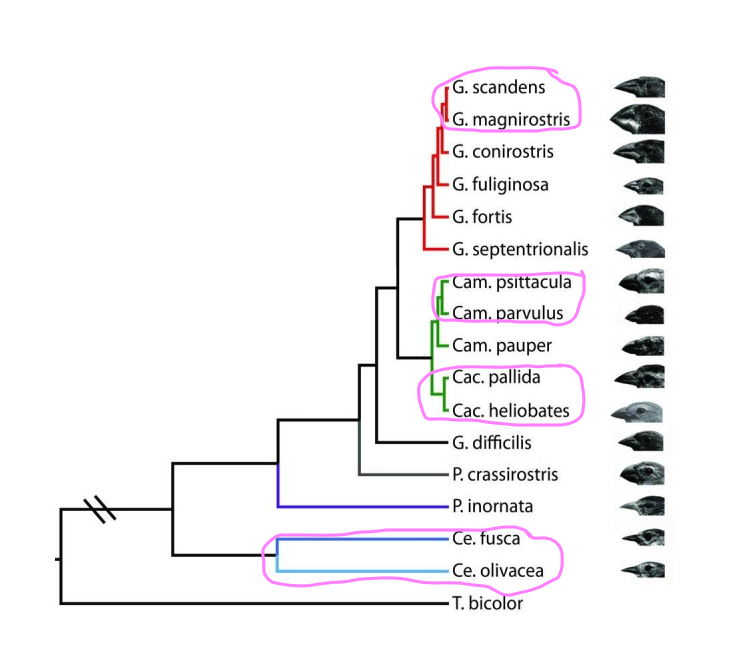Darwin’s finches (Thraupidae, Passeriformes) have beaks of different shapes that allow them to feed on many different diets: insects, seeds, berries, and young leaves. For example, large ground finch has a very deep and broad bill adapted to crack hard and large seeds, while the cactus finch has an elongated and pointy beak for probing cactus flowers and fruits. Geospiza finch bills develop their distinct shapes during embryogenesis and are apparent upon hatching. Figure below is species-tree estimation of phylogenetic relationships among the Galápagos finches using mtDNA and nuclear loci information. Branch lengths are proportional to time and genetic distance except for abbreviated basal node depth. Photographs of profiles of each species are shown. Identify all species pair(s) who have the most similar DNA sequence and explain why. Does branch length matter in determining the most similar species regarding DNA?
Darwin’s finches (Thraupidae, Passeriformes) have beaks of different shapes that allow them to feed on many different diets: insects, seeds, berries, and young leaves. For example, large ground finch has a very deep and broad bill adapted to crack hard and large seeds, while the cactus finch has an elongated and pointy beak for probing cactus flowers and fruits. Geospiza finch bills develop their distinct shapes during embryogenesis and are apparent upon hatching.
Figure below is species-tree estimation of phylogenetic relationships among the Galápagos finches using mtDNA and nuclear loci information. Branch lengths are proportional to time and genetic distance except for abbreviated basal node depth.
Photographs of profiles of each species are shown.
Identify all species pair(s) who have the most similar DNA sequence and explain why. Does branch length matter in determining the most similar species regarding DNA?

Step by step
Solved in 2 steps




